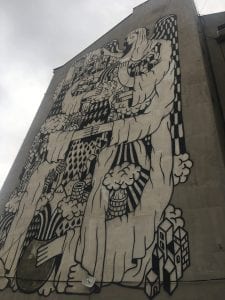Belgrade is an odd city— while walking the streets, you can find historical sites nestled next to new, more modern structures. From when I whiz by in a local taxi or when I take my time strolling the city’s sidewalks under the hot sun, I can tell that Belgrade has an in-between identity that can be intimidating or frustrating at first, but from knowing the historical and cultural roots of the “white city”, everything makes sense.
It is an understatement to say Belgrade has witnessed a lot— the region has endured through period after period of social and political turmoil. The social influences that have shaped Belgrade’s character over time include the changes in name of the city, the number of wars its people have witnessed, the dialects spoken in the region, the existence of several ethnic groups and the consistent struggle to reach a uniform national identity or coexistence of multiple identities. Historical influences that simultaneously affected Belgrade’s path include the different governing authorities, the clash between Turkish and Roman cultures, the West’s stereotype of Eastern Europe as “Europe’s Other”, and the NATO bombing in 1999. Furthermore, political forces such as strict socialist regimes and the current campaign to accede into the European Union also contribute Belgrade’s liminal personality.

“La Santa de Belgrade” painted by Guillaume Alby depicts a saint with multiple arms that appears to protect and destroy the city, symbolizing the many times Belgrade has been razed to the ground throughout its tumultuous history.
These sociopolitical and historical factors contribute to the culture of Belgrade today. For instance, when walking to class, I pass by buildings built to mimic European “Romantic” architecture, old churches and temples, and tall Brutalist apartment structures built during Tito’s socialist period to provide satisfactory and equal housing. The Brutalist style of architecture that inspired many of the edifices in Belgrade remind me of Northwestern’s Main Library, which is also an example of this architectural style. Overall, there is no one identity that can fully describe Belgrade, because it has it all, and the lack of uniformity or organization is odd at first, but understandable once you get to know the city and the people who live there.

Picture taken from Kalemegdan Fortress, where locals often go to see the sunset. The building in the background is a popular Brutalist piece, Genez Tower.
The locals I’ve met while living in Belgrade are what make my experience memorable. To be honest, it is difficult to strike a conversation with a local person if you’re with a bunch of other foreigners, especially Americans. And the people here, from taxi drivers to restaurant waiters to store clerks, generally don’t initiate small talk like many of us are used to in America. However, the times when I go out of my way to make conversation are times that I appreciate living in Belgrade. During my last week, I had a store clerk at a grocery store telling me how exciting it was that we were studying in Belgrade, that we had chosen to come to Serbia. She, along with many of the medical school and mental health institute faculty, had a sense of pride that their city, despite its outward appearance, was found fascinating enough. Although at first this sentiment felt surprising to me, I found it quite common amongst locals, and later found it humbling that I could have this experience because I probably would never have considered visiting Belgrade otherwise.
From the architecture to its people, Belgrade is a city worth remembering and revisiting.


